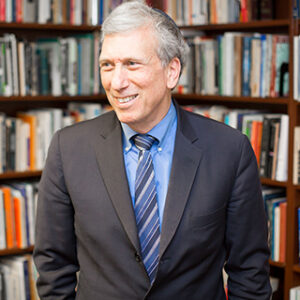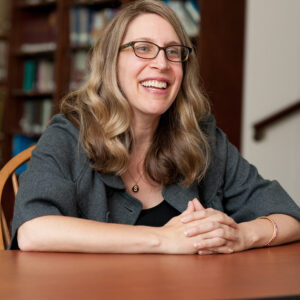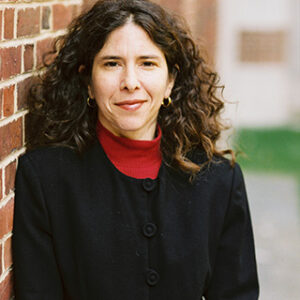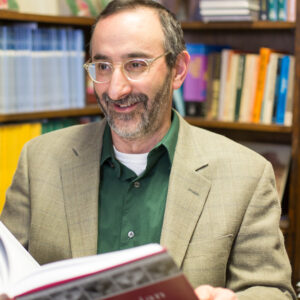Search Results
Back to JTS Torah Online's Main page
Prophetess, Leader, Musician
Apr 29, 2016 By Matthew Berkowitz | Commentary | Pesah
Joy is the theme of the hour as God’s praises are sung during the completion of Hallel. The image that bursts forth in our mind’s eye is that of Miriam the Prophetess and the women celebrating their newly found freedom on the banks of the Reed Sea. While the moment is solemn, it is also one of intense elation.

Remembering Pesah 1946
Apr 22, 2016 By Avinoam Patt | Commentary | Pesah
Every Passover as we read the Haggadah, we recite:
In each and every generation, a person is obligated to regard himself as though he actually left Egypt. As it says: “You shall tell your son on that day, ‘It is because of this that God took me out of Egypt.’” (Exodus 13:8)
Seventy years ago, in April 1946, the first Passover in postwar Germany followed the liberation of the concentration camps. The survivors who gathered to form the She’erit Hapletah, the surviving remnant, felt this transition from slavery in a more immediate sense than any generation of the children of Israel in the 2,000 years that preceded them.
Read More
A Noble Freedom
Apr 22, 2016 By Tim Daniel Bernard | Commentary | Pesah
Many Virginians of middle and upper ranks aspired to behave like gentlemen. In the early seventeenth century an English gentleman was defined as one who could “live idly and without manual labor.” The words “gentleman” and “independent” were used synonymously, and “independence” in this context meant freedom from the necessity of labor.
Read More—David Hackett Fischer, Albion’s Seed: Four British Folkways in America, 366

Beyond the Exodus from Egypt
Apr 15, 2016 By Arnold M. Eisen | Commentary | Shabbat Hagadol | Pesah
Most of us, at one time or another, have asked the question about the Passover seder that the Haggadah attributes to the “wicked son”: What is the point of all this? At such moments of skepticism, we probably understand why an annual family gathering is worthwhile, we perhaps remember fondly the seders of our youth, and we may even confess to being moved by the rituals reenacted at the seder table year after year: reciting the four questions, dripping wine from cup to plate at the recital of the ten plagues, singing Had Gadya. But really, we ask: Why is the event of Israelite slaves leaving Egypt over 3,000 years ago (if it ever happened in the first place) so important that an entire holiday is devoted to it (not to mention countless daily prayers)?
Read More
Inside Out
Apr 15, 2016 By Ally Sterling | Commentary | Metzora
This week’s parashah, Metzora, details the special procedures a kohen performs to purify the recovered metzora (a person suffering from some kind of skin condition), tzara’at in the home, and ritual impurity. Metzora is about the insides (childbirth and emissions) and outsides (skin afflictions) of the body. I created Inside Out as part of a series of biological drawings that explores the beauty and intricateness of the inner workings of the human body. When I made Inside Out, I wanted to explore the different functions and shapes of human anatomy and physiology, and also the way in which everything is connected.
Read More
Keep Calm and Consult a Priest
Apr 8, 2016 By Hillel Gruenberg | Commentary | Tazria
Tazria begins with a discussion of the ritual purity of a woman following childbirth and goes on to relate the treatment of leprosy. Reflecting on this juxtaposition of topics, my thoughts turned to the Zika virus, which has garnered global attention because of evidence it may cause birth defects in the children of mothers infected while pregnant.
Read More
Here I Am, Tzara’at and All
Apr 8, 2016 By Rachel Rosenthal | Commentary | Tazria
When I was 12, a few weeks before my bat mitzvah I went in to meet with one of the rabbis of my synagogue. At the time, the synagogue newsletter included a “pasuk of the week,” a verse from that week’s Torah portion that was particularly interesting or thought provoking. However, as the rabbi confessed to me, the week of my bat mitzvah was to be the end of that custom. He just couldn’t find anything that fit the bill. That week’s parashah? Tazria.
Read More
How Can People Be Holy?
Apr 1, 2016 By Stephen A. Geller | Commentary | Shemini
Shemini (Lev. 9–11) contains two main topics: the elaborate sacrificial rites performed on the eighth day of the dedication of the Tabernacle, and the laws regarding kosher and nonkosher animals. The first topic details the numerous sacrifices accompanying the last stages of the dedication of the shrine, which reach an intensity matched only by the yearly rites of the Day of Atonement. This is no accident, because the annual event is meant to restore the shrine to the purity it possessed on the day it was dedicated.
Read More
Easing the Transition From Shabbat
Apr 1, 2016 By Shira D. Epstein | Commentary | Shemini
The parashah delineates several distinctions between holy and unholy: what constitutes an acceptable sacrifice; which animals fall within the category of kosher; the actions that might transition a vessel, oven, or garment to the status of unclean.
At the end of Shabbat, we invoke these same words during havdalah, praising God “who makes a distinction between holy and profane.”
Read More
A Set Table
Mar 25, 2016 By Yonatan Dahlen | Commentary | Tzav
Read MoreI try to bless
When I wear Your stars as my blanket;
My winter coat when days are dark
When life is a knife
Resting on the altar of time.

Creating I-Thou Moments That Strengthen Relationships, and Communities
Mar 18, 2016 By Stephanie Ruskay | Commentary | Pekudei
Semikhah, ordaining of clergy, is on my mind these days as we move closer to my first JTS ordination as an associate dean. No longer the person receiving semikhah, this time I am privileged to help ordain new clergy.
Read More
Purim Heroines
Mar 18, 2016 By Stefanie B. Siegmund | Commentary | Purim
I did not wear the crown and satiny dress, or stand in line for the beauty pageant. Queen Esther was not a role model I—or many other children—could choose. Later, in the academy, I understood that Esther’s subterfuge and seduction were the strategies of the weak, the politics of the minority.
Read More
The Call to Find a Mentor and to Mentor Others
Mar 11, 2016 By Mark Young | Commentary | Pekudei
In parashat Pekudei, the Israelites are on a journey to a new life, having escaped the Egyptians, experienced the revelation at Sinai, and completed the building of the Tabernacle. They are now in the wilderness, sometimes unclear about their direction, sometimes filled with fear, and in need of guidance. However, they had mentors to guide them. They had the cloud that indicated the Presence of God, and they had Moses on their side.
Read More
With God, It’s Complicated . . .
Mar 11, 2016 By Rami Schwartzer | Commentary | Pekudei
For a story that began with the promise of intimacy, I had hoped for a happier ending.
Read More
Imagining Community, Then and Now
Mar 4, 2016 By Arnold M. Eisen | Commentary | Vayak-hel
Anyone who has mounted a fund-raising campaign, or sought volunteers for an institution or organization, will immediately recognize the account of the Tabernacle’s construction in this week’s Torah portion as utopian in the extreme. “All the artisans . . . said to Moses, ‘The people are bringing more than is needed for the task entailed in the work that the Lord has commanded to be done.’ Moses thereupon had this proclamation made throughout the camp: ‘Let no man or woman make further efforts toward gifts for the sanctuary!’ Their efforts had been more than enough for all the tasks to be done” (Exod. 36:5–7).
Read More
Artisan and Architect
Mar 4, 2016 By Barbara Mann | Commentary | Vayak-hel
Ben Uri looked at the work of his hands and was astonished at how the ark stood firm while he himself was like an empty vessel. His soul was sad and he broke out in tears.
—S. Y. Agnon, Agunot
Read More
Who Wrote The Ten Commandments?
Feb 26, 2016 By Benjamin D. Sommer | Commentary | Ki Tissa
Where does our Torah come from? Did all the words of the Torah come from heaven, so that the Torah is a perfect divine work? If that is the case, then the tradition the Torah inaugurates is one that human beings should accept in its entirety without introducing any changes. Or is the Torah itself the result of human-divine collaboration? If that is the case, the tradition the Torah inaugurates may allow some change, at least by those Jews of each generation who accept the Torah and live by its commandments.
Read More
Bronze Bull, Golden Calf
Feb 26, 2016 By Tim Daniel Bernard | Commentary | Ki Tissa
The metal bovine with a peculiar magnetism that is known as the Golden Calf (Exod. 32) brings to mind Arturo Di Modica’s Charging Bull (1989). A potent Financial District icon, it exerts a remarkable pull on passersby (on its webcam you can see the crowd so often around the statue). According to the artist’s website, it was designed as a “symbol of virility and courage” and “the perfect antidote to the Wall Street crash of 1986,” but it was also created without the invitation of the Wall Street community and was promptly removed from its original location in front of the New York Stock Exchange.
Read More
The Clothes Make the Man
Feb 19, 2016 By Rachel Smith | Commentary | Tetzavveh
Read More[The] unlikely alliance of diverse and superficially incompatible musical traditions, mysteriously accomplished under punk, found ratification in an equally eclectic clothing style which reproduced the same kind of cacophony on the visual level.
—Dick Hebdige, Subculture: The Meaning of Style, 26

Including the Broken
Feb 12, 2016 By Tobi Kahn | Commentary | Terumah
Arks in contemporary sanctuaries are spiritual descendants of the Ark whose construction and purpose is described in this week’s parashah. The ark above was created for Congregation Ohr Shalom–The Summit Jewish Community Center, in Summit, New Jersey.
Read MoreSUBSCRIBE TO TORAH FROM JTS
Our regular commentaries and videos are a great way to stay intellectually and spiritually engaged with Jewish thought and wisdom.




